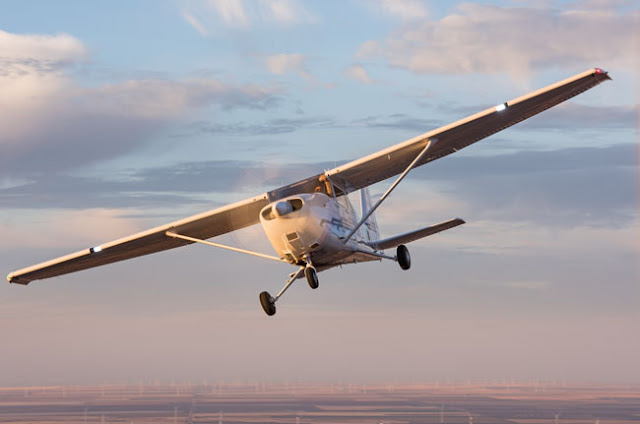Single-pilot operation: close or distant future?
Single-pilot operation: close or distant future? | |||||||||||||||||||||||||||||||||||||||||||||||
Many of our applicants and prospective students frequently ask us a persistent question: what is going to happen to me, as a professional pilot, if the airline industry decides to adopt a single-pilot operation instead of a two-pilot system like they have now? Well, we have a few thoughts about this issue, so, read on! | |||||||||||||||||||||||||||||||||||||||||||||||
 | |||||||||||||||||||||||||||||||||||||||||||||||
Single pilot operation switch is a treading concern for the airline pilots all over the world, especially those who fly cargo. And to address this concern properly, we need to understand what the airline industry actually is, how it behaves over time and which factors govern its behavior. The airline industry, with its intricate network of interconnected systems and unwavering commitment to passenger safety, operates under a multitude of regulations, industry standards, and operational considerations. Within this framework, the notion of single-pilot operation raises questions and discussions about its feasibility. A deeper examination of practicalities, safety concerns, and operational requirements reveals that the airline industry is unlikely to embrace single-pilot operation as the dominant mode over the next 20 years. Safety and Operational Demands At the core of the airline industry lies an unwavering commitment to safety. Maintaining the highest level of safety is non-negotiable, and the presence of two pilots in the cockpit serves as a crucial element in achieving this goal. Dual-pilot operation allows for effective workload management, improved decision-making, and enhanced situational awareness. The division of responsibilities, cross-checking of critical tasks, and shared burden of managing complex operational challenges contribute to a safer and more efficient aviation environment. Regulatory Requirements and Industry Standards The airline industry operates within a robust regulatory framework that sets stringent standards to ensure safety and operational efficiency. Regulatory bodies, such as the Federal Aviation Administration (FAA), have established guidelines and regulations that govern crew operations. These standards have been developed over years of analysis, research, and experience. Any significant changes to these regulations would require extensive evaluation, testing, and consensus among industry stakeholders. Given the conservative nature of the industry and the importance of safety, it is unlikely that a shift towards single-pilot operation will occur within the next two decades. Crew Resource Management Crew resource management (CRM) is a vital aspect of aviation operations. It recognizes the importance of effective communication, teamwork, and collaboration within the cockpit. Two-pilot operation aligns with the principles of CRM, as it allows for shared responsibilities, cross-checking of critical tasks, and the ability to manage unforeseen events or emergencies more efficiently. The industry values the synergistic benefits derived from the presence of two pilots, fostering a culture of collaboration and decision-making that contributes to a safer aviation environment. Passenger Confidence Passengers place their trust in the aviation industry when they board an aircraft. The presence of two pilots in the cockpit serves as a visible demonstration of the industry's commitment to safety and professionalism. It instills confidence in passengers, assuring them that their well-being is of utmost importance. Maintaining the status quo of dual-pilot operation is crucial for fostering trust and reassurance among travelers, ensuring their peace of mind throughout their journey. Technological Limitations and Transition Challenges While advances in automation and artificial intelligence continue to shape the aviation landscape, complete reliance on technology for single-pilot operation presents challenges. The development of highly advanced automation systems and artificial intelligence algorithms that can reliably and safely replace the skills and expertise of a human co-pilot is an intricate and evolving process. Ensuring the robustness, reliability, and fail-safe measures of such systems requires extensive testing, validation, and regulatory approval. The transition to single-pilot operation, if at all possible, would be a gradual and complex process, necessitating careful consideration of safety, technological limitations, and regulatory adaptations. So, how likely it is that the airline industry is going to switch to a single-pilot operation within the next 20-30 years? In one word - It is highly unlikely. Considering the multifaceted nature of the airline industry, the unlikelihood of single-pilot operation becoming the dominant mode over the next two decades is evident. The industry's unwavering commitment to safety, adherence to regulatory requirements, appreciation of crew resource management principles, importance of passenger confidence, and the complex challenges associated with technological limitations and transition all contribute to the enduring presence of dual-pilot operation. The role of two skilled pilots in the cockpit remains essential for effective workload management, enhanced decision-making, and maintaining a safe and secure aviation environment. As the industry progresses, it will continue to prioritize collaboration and the benefits derived from the presence of a cohesive cockpit team, ensuring the continued safety and efficiency of air travel. We hope you enjoyed our opinion on this matter. Do you disagree? Join almost 40,000 Aerocadet Facebook group members and Start a discussion on our FB Page here >>> | |||||||||||||||||||||||||||||||||||||||||||||||
| |||||||||||||||||||||||||||||||||||||||||||||||
Questions? Need a live consultation? Visit aerocadet.com! | |||||||||||||||||||||||||||||||||||||||||||||||
 | |||||||||||||||||||||||||||||||||||||||||||||||
| |||||||||||||||||||||||||||||||||||||||||||||||



Comments
Post a Comment